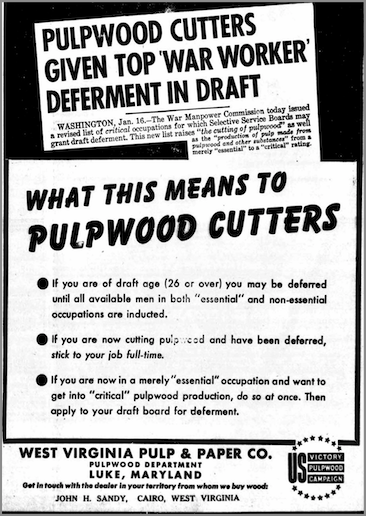By Patricia Harris ,
President, DC Historical Society
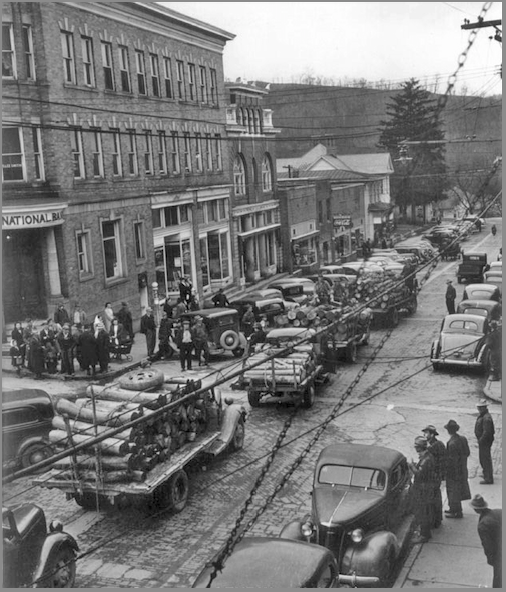
Main Street West Union Celebrates the Pulpwood Farmers with a parade through town.
DODDRIDGE COUNTY
PULPWOOD FOR THE WAR
EFFORT — WWII – 1945
Did you know that in WWII American farmers played an important role in the war effort? And, that Doddridge County farmers were part of that great war effort? It’s true.
In the West Union Herald in August of 1943, the announcement of a pulpwood campaign was underway. It seemed that the war effort was hampered by a serious pulpwood shortage and an urgent appeal was made for help from America’s farmers and woodlands owners.
Since the United States entered the war after the bombing of Pearl Harbor, the need for pulpwood had become greater than the suppliers could keep up with, endangering the war itself. Production of pulpwood to manufacture products for both military and civilian use needed to be increased by 19 percent in WV during the second six months of 1943 to meet the War Production Board quota for the State.
The quota for WV was 82,800 cords a year. Production to June 30, 1943, was computed by the WPB was 37,781 cords, which is 3,619 cords or 9 percent under the quota for the first half of the year. Unless 45,019 cords were produced before the end of the year, WV would fall short of its goal.
In order to sustain the war, America needed pulpwood, the raw material for making smokeless powder, rayon for parachutes, plastics for airplane parts, weatherproof containers for shipping ammunition, foods, blood plasma, and other supplies for the military upon which America relied to keep it safe and secure. It also needed pulpwood for newsprint and other papers. In total, it was estimated that at least 13,000,000 cords would be needed for 1943 alone. It was from these numbers that the U.S. government drew quotas by the War Production Board for each of the pulpwood producing states.
Five government departments and war agencies cooperated in the Victory Pulpwood Campaign. The press campaign was under the direction of the Newspaper Pulpwood Committee, headed by Walter M. Dear, publisher of The Jersey Journal, Jersey City, NJ.
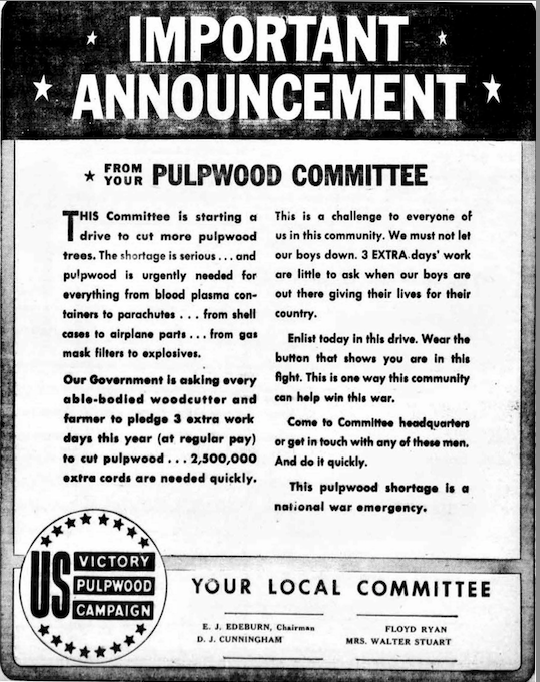
WV newspapers were asked to assist in the drive to increase supplies of pulpwood for direct war uses, for newsprint and other print papers. Pulpwood consuming mills were placing additional advertising locally to advice farmers, woodland owners, and woods operators of the urgent need for pulpwood, describing what kinds of trees to cut; where to deliver them; and gave specifications and prices. The farm press in pulpwood production areas also cooperated in the campaign.
Doddridge County farmers and landowners did not disappoint. Many farmers cut timber for pulpwood when they couldn’t do much else at any given place and time and in doing so were viewed as both patriotic and profitable farmers. With a cost of approximately $127 and the prevailing prices totaled $332.28. This less all costs left a profit of $205.28, not bad for 1944.
As the war wore on, the need for pulpwood as raw material grew expedientially. The army reported that ordinance equipment and supplies were being shipped overseas at a rate of 14 tons a minute, day and night. The fact that a lot of the material was destroyed before it reached the battlefront; more was lost in action as our fighting men press forward in Europe and on the Pacific beachheads.
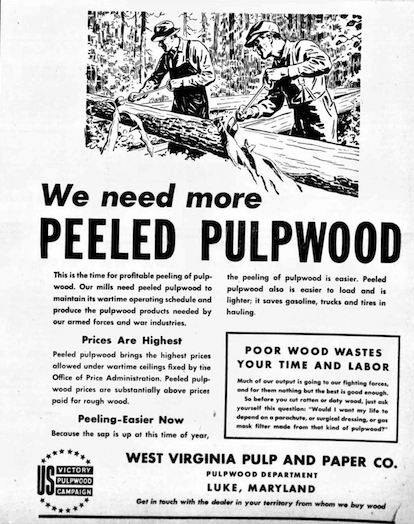
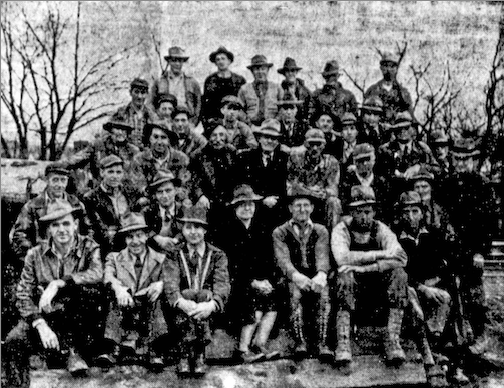
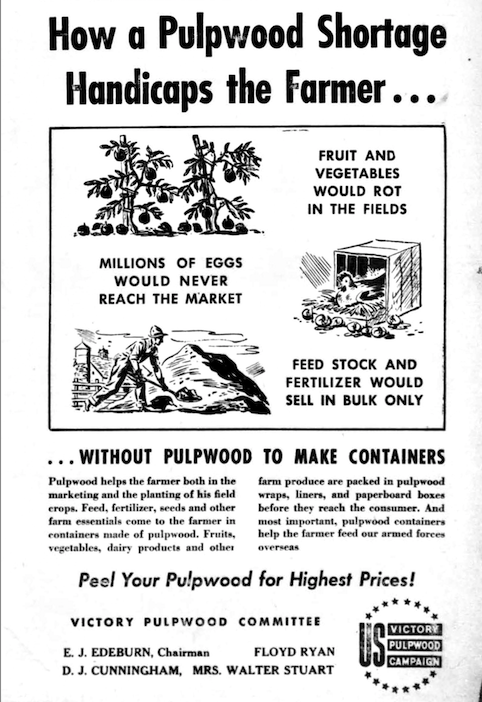
How a pulpwood shortage handicaps the farmer.
The pulpwood production had become dismal under the strain of the war in 1942, but a year after the American newspapers launched the Victory Pulpwood Campaign, in response to an appeal from Donald M. Nelson, chairman of the War Production Board, progress had been made do in part to the local newspapers like the West Union Record and West Union Herald. The trend in pulpwood production had been reversed. Receipts the year was consistently better than the day before and in some months on a par with 1942 when pulpwood production reached its highest peaks. However, pulpwood inventories all but disappeared during the lean months of 1943 and military requirements for paper and other pulpwood products have exceeded earlier Government estimates.
